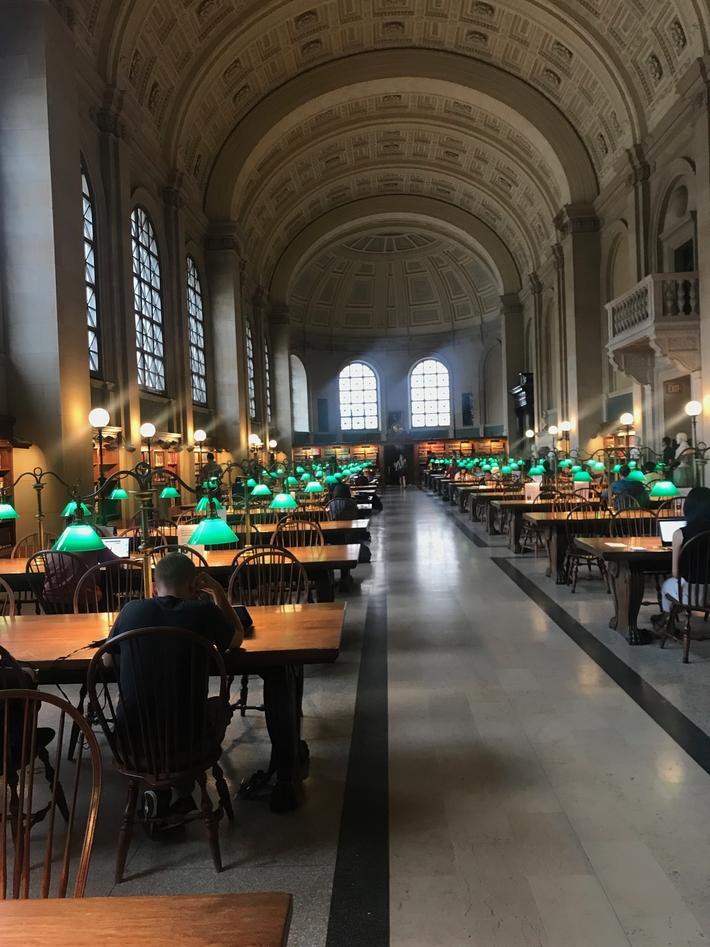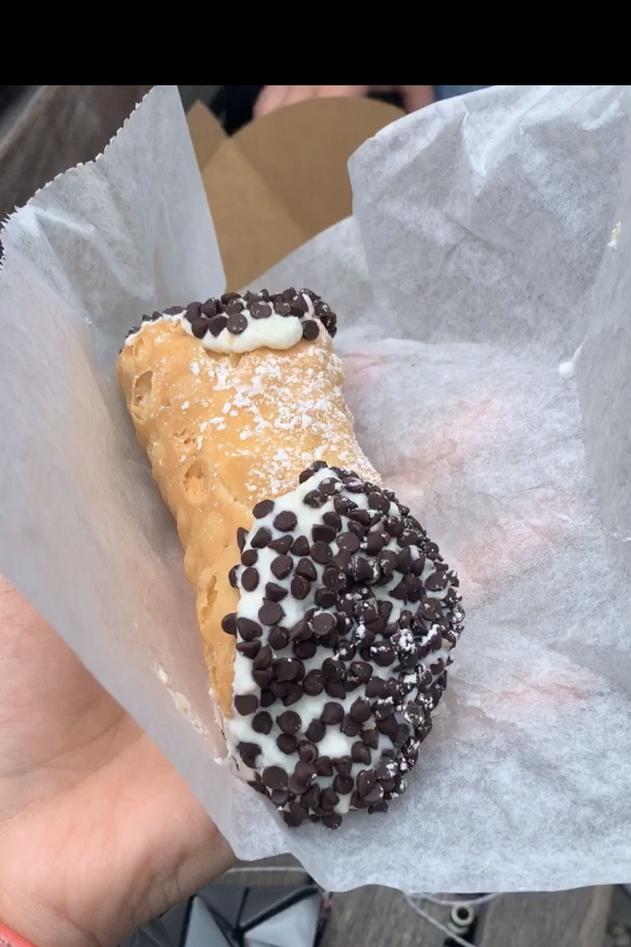Boston summer interns
This summer, CCBIO sent their second batch of students to be Boston summer interns in the CCBIO/Harvard INTPART collaboration. Read the full report from Hanna Dillekås, PhD candidate in Oddbjørn Straume’s group, Ridhima Das, PhD candidate in Dana Costea’s group, and Amalie Fagerli Tegnander, medical student affiliated to Lars A. Akslen's group, in Elisabeth Wik’s project.

Main content
Hanna – the Zetter and Rogers labs
The summer internship in the vascular biology program has truly been an amazing and unique experience. I have been inspired, challenged, learnt a range of different lab techniques, improved presentation skills and critical reading of papers, planning of experiments and many other things. I was co-hosted by Dr Bruce Zetter and Dr Michael Rogers working mainly in a project in the Rogers lab, that was actually a collaboration with the d’Amato lab, so I got to interact with lots of wonderful scientists. I was mainly working on generating CRISPR/Cas VEGF knockout cell lines of melanoma, lung carcinoma and fibrosarcoma, to be used in experiments on angiogenesis induced dormancy as well as modelling resistance to antiangiogenic therapy. Never having worked with genome engineering, and with limited experience in most other lab techniques, the learning curve was steep, but never to the point that I got discouraged. Dr Rogers is a great teacher, pushing me to try and trust myself, and stepping in just at the right time when I got stuck and encountered problems.
The atmosphere in the lab is in parts as I had anticipated, high ambitions, long working days and brilliant minds, and in others quite different. I must admit I had expected more sharp elbows and competitiveness, not the warm, fun, friendly, helpful environment I experienced, both within and between groups. Everybody was always eager to help each other, and answer any questions they could, taking the time to show and explain, lending out equipment and reagents. This combination of ambition and friendliness also set the tone for the weekly lab meetings. At each meeting, two lab members present their work and results, and the rest take the job of posing questions, comment, suggest alternative approaches, both on the science and the presentation, very seriously, but always in friendly tone, genuinely wanting to help to improve. All lab meetings lasted for at least two hours, and I was so fortunate to present at three during my stay, getting feedback both on my experiments in the lab, and what I’m working on in Bergen.
I also had the luxury to have weekly one-on-one meetings with Dr. Zetter, discussing the overarching questions of cancer, science, career and life. These discussions were equally delightful and demanding, as Dr. Zetter is genuinely interested in mentoring and pushing young scientists forward, beyond the comfort zones we may have set up for ourselves. The ten weeks in Boston did just that to me, and I’m grateful to say that I’m leaving with plans and scientific goals more ambitious than I had when coming, and knowledge and network expanded, enabling me to pursue them.
Boston – outside the lab
Even though working days are long, we were able to explore and experience some Boston life outside the lab. Boston is a very nice city, big but not overwhelming, immersed in culture, history and knowledge. We attended “Shakespeare in the park”, an annual event of free outdoors theater, guided tours of the old Harvard campus, outdoors markets, concerts and the arts museum. Being a coastal city, we also visited a nearby beach, reached by the metro, with a sand sculpting festival and took a whale-watching boat trip. When the lab members found out we planned to attend a Red Sox baseball game, 20 minutes of a lab meeting was dedicated to explaining the rules of the game, as well as what to eat and songs to be sung during the game, to get the full and authentic experience. We had a great time, the Red Sox won, so the atmosphere was amazing. Americans are also very good at welcoming newcomers, and we’ve been invited both to dinners, going to the movies and even a baby-shower!
Ridhima – Dr. Diane Bielenberg’s Lab
Last year, CCBIO had organized a course on Cancer-related Vascular Biology where I met several professors and researchers from the Vascular Biology Program, including Dr. Marsha A. Moses (Director of the Vascular Biology Program). Through the new connections provided by that course, I was very happy to get the opportunity to attend Dr. Bielenberg’s lab in Boston this summer. It was a somewhat peculiar start for me at the lab, since I joined there on my birthday, which was really exciting for me, but the very next day my backpack was stolen which had all my documents, laptop, wallet as well as my passport. I was extremely overwhelmed by this sudden turn of events but with Dr. Bielenberg's and my colleague’s’ support and help, I was able to get through this tough initial time and get settled in Boston.
My focus for the duration at Dr. Bielenberg’s lab was primarily on tumor lymphatics and I was also part of a pre-clinical drug trial using semaphorins. This was a completely new field for me, which excited me to gather and read all related research papers and additional information while I pushed myself to learn many new techniques during my stay. One of the most exciting learning experiences was to handle and work with mice, as I had never done this before. There were frequent lab meetings with everyone presenting their work where I also got the opportunity to present. The critical views and questions during these meetings really helped in shaping my work in a better way. I worked closely with Dr. Yao Gao (postdoc) and Dr. Asma Almazyad (DDS) at the lab, who were a great support during my stay and helped me navigate.
Being surrounded by wonderful colleagues and Dr. Bielenberg at her lab, my view on the current state of cancer research was expanded, and this motivated me to dive deeper into the subject. The overall atmosphere within the lab has encouraged me to apply my learning for future utilization in my PhD and further research.
Summer in Boston
One city which has a reputation for being the center for global education and research across all fields, is Boston (and Cambridge). We had a great time exploring the many world-class universities and colleges the city has. Boston & Cambridge also have huge student populations, which also makes them extremely diverse and multicultural, making us spend almost all of our weekends exploring Boston’s many restaurants and trying out cuisines from all across the world. We also spent time experiencing open theaters, whale-watching and duck tour while exploring the city streets. Coming from Norway, this Boston summer felt extremely hot as we experienced some peak summer days where the temperature crossed 30°C.
Amalie – the Watnick lab
I was fortunate to spend my summer at Dr. Randolph Watnick’s lab. I had a great time – seven weeks filled with networking, knowledge and inspiration. The main focus in Dr. Watnicks lab was the role of the tumor microenvironment in tumor growth and metastasis. Further, they also study cancer stem cells and their mediation of tumor initiation and drug resistance.
When I arrived at Dr. Watnick’s lab this summer, I had just ended my first year of medical school at the University of Bergen. I had barely any lab experience and was a bit nervous about my mission at the lab. But this was no problem. Dr. Watnick and his Postdoctoral Fellow Lufei Sui welcomed me warmly. They spent a lot of time introducing me to basic lab techniques and taught me how to read research papers to understand the biological processes in the tumor and its microenvironment. After 7 weeks and a steep learning curve, I could perform several different lab techniques and read more advanced research papers on the topic with deeper understanding.
Every day at the lab was different and challenging in its own way. In the beginning I mainly observed Dr. Sui, and spent a lot of time reading up on the signaling pathway and the different lab techniques. When I felt more comfortable, I got to start doing my own experiments, but everyone in the lab was always right by my side when I had questions or needed any form of guidance. They always allowed me to ask a lot of questions and took their time to explain new issues to me. I always felt very welcomed by the whole group. During the weeks, I joined several lab meetings in the Watnick lab, but I also got to take part in the Rogers lab meetings. In addition to this, there were several “metastasis meetings” where researchers from different labs presented their work. This was inspiring and very useful to watch, and all students were encouraged to ask questions and participate in the discussions afterwards. It was an eyeopener for me to see the importance of presenting your work with colleagues, and how critical thinking and discussions lead to new ideas and improved projects.
I will always be grateful to all the people in Boston who made my summer internship so educational, inspiring and challenging. These weeks was really a flying start into the world of research, and I can’t wait to start my own project back in Norway.
Boston
Boston is a city with a lot to offer – also outside of the lab. The city is extremely copious and accessible. In our spare time, we used the blue bikes and the subway, which Bostonians refer to as the “T”, to explore the city and to see various historical and cultural sites. I did a boat trip down the Charles River and walked in the streets of Cambridge. We did the freedom trail and got to see where Boston tea party played out. We also explored our beautiful neighborhood in Brookline village, and used the parks around frequently – both for jogging in the morning and for concerts at night. Our neighborhood was only a ten minute walk from Longwood medical area, where both Harvard Medical School and Boston Children’s hospital were located.







